This article is part of a guide to London from FT Globetrotter
From the top of Primrose Hill in north London, you can see all the way to St Paul’s Cathedral and the Palace of Westminster, across the swaths of trees that permeate the cityscape. One of 13 protected vistas in London, this visual corridor shows that, for a city that’s home to nearly nine million people, there are a surprising number of green spaces. More than 35,000 acres of parks, gardens and woodland cover nearly 40 per cent of the UK capital, providing home to around 8mn trees and 14,000 types of plants and animals.
Appreciating the sights and sounds of nature in these green havens is relatively easy thanks to London’s growing network of walkways, cycle paths and public transport, but having an environmentally friendly break in the capital can be much more than that. These days, going green isn’t about hugging trees or staying in expensive eco hotels in far-flung places — it can apply equally to a city break.
Geese at east London’s Walthamstow Wetlands, Europe’s largest urban wetland reserve © Clive Helm/Alamy
As local authorities work towards net zero, the knock-on effect of low carbon policies is paving the way for eco-minded visitors. Regenerative wetlands and connected green spaces help manage stormwater, air quality and improve biodiversity, but also provide glorious green sanctuaries.
In London, the circular economy is booming. Innovative high street businesses are designing out waste and pollution by using material that can be reused, recycled, or composted. Restaurants are turning surplus food into delicious dishes; food markets sell novel jams and chutneys made from wonky fruit and veg that would otherwise be discarded. Fashion outlets repair, reuse and refurbish clothes, while transport facilities such as bike rental and carpooling promote the concept of sharing rather than owning. Plenty of hotels, restaurants, visitor attractions and other places of interest are also doing substantial work on sustainability, installing low carbon technologies to keep their footprint down to a minimum.
Here are some suggestions for enjoying an eco-minded city break in London.
Saturday
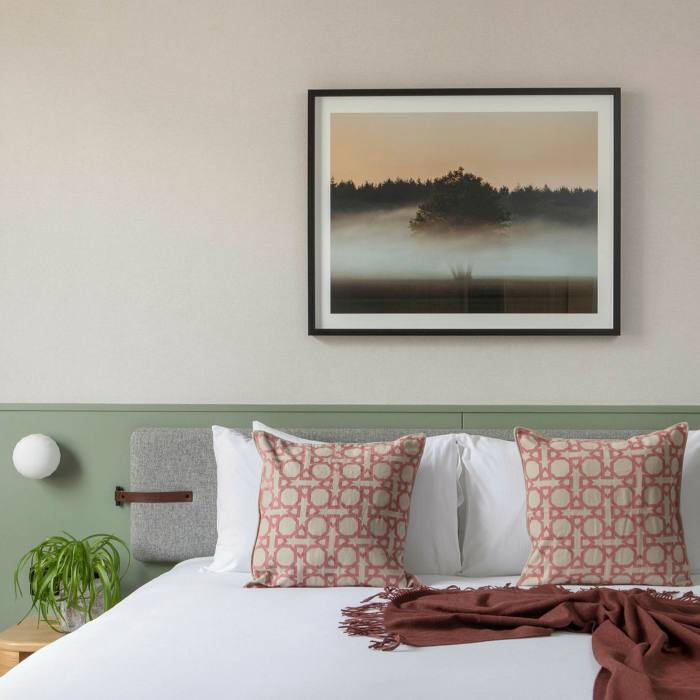
The rooms at the Inhabit Queen’s Gardens hotel are stocked with furnishings and products from social enterprises © Jack Hobhouse
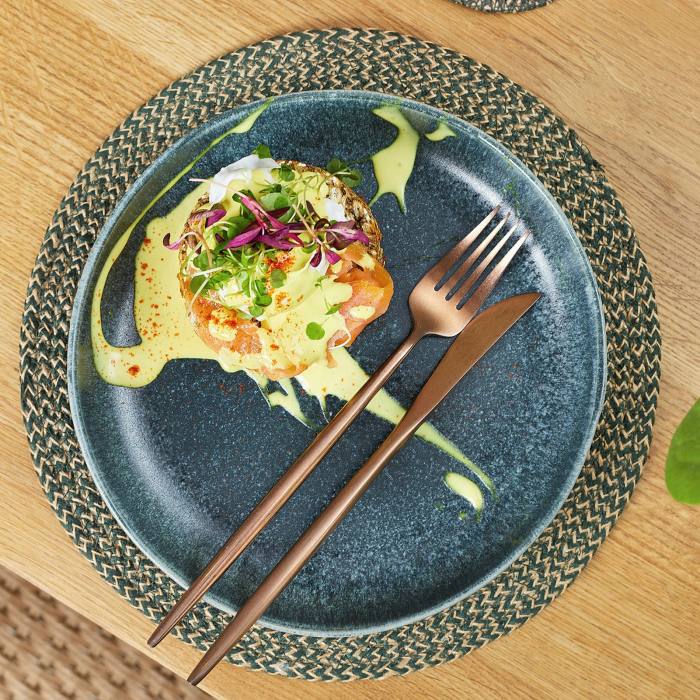
The Bayswater hotel’s restaurant is run by north Devon health retreat Yeotown. Breakfast might include Yeo Benedict: smoked salmon and poached egg on a chia and oat English muffin, covered in vegan cashew hollandaise sauce © Ryan & Robert
Wake up in the hottest new green hotel in town at Inhabit Queen’s Gardens in Bayswater, just a few minutes’ walk from Paddington station. It’s as socially conscious as it is environmentally sensitive: the meat-free kitchen is run by Yeotown (the healthy-lifestyle retreat in North Devon), the minibar is stocked by Social Supermarket, and the rooms are packed with nature-inspired artworks, tactile ceramics and an array of soft furnishings from dozens of social enterprises.
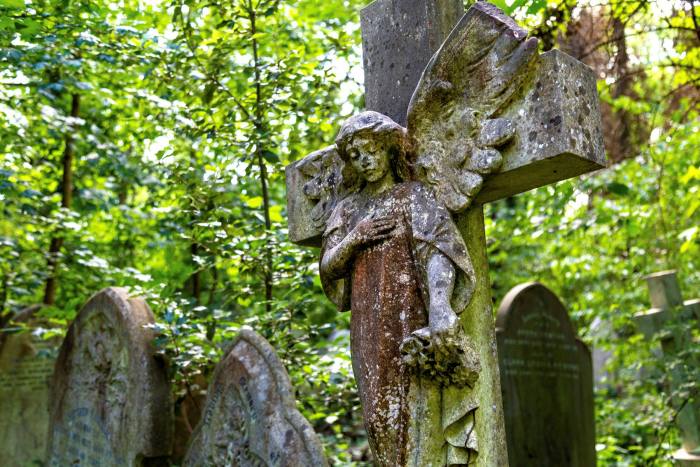
Abney Park is one of London’s ‘Magnificent Seven’ garden cemeteries © Nathaniel Noir/Alamy
Start the day with an outdoor swim in one of London’s Art Deco or open-water swimming spots (the nearest is the Serpentine in Hyde Park, just five minutes by bike from Inhabit), then pop back to the hotel for a cold-pressed juice packed with nutrients and a well-deserved “bowl of goodness”. I recommend the Yeo Benedict: smoked salmon and poached egg (or tofu) on a chia and oat English muffin, with a vegan cashew hollandaise sauce.
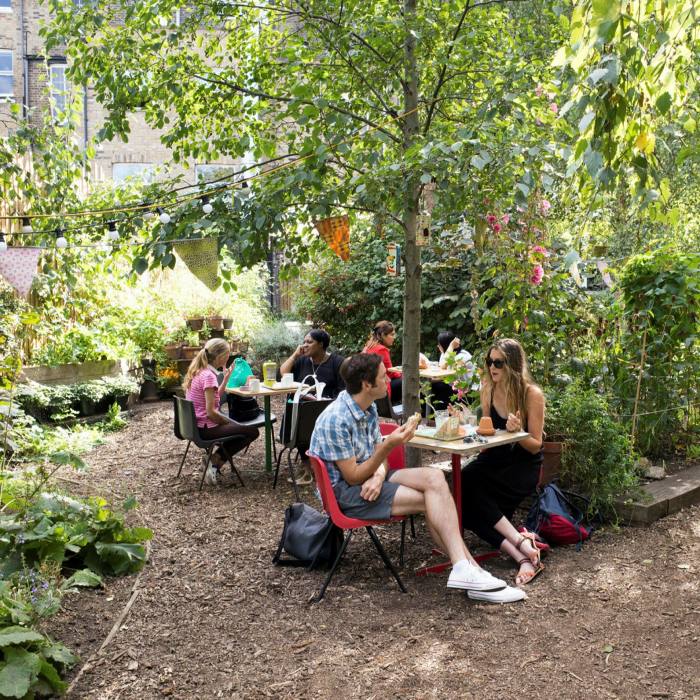
Dalston Curve Garden is a community green space on the site of a former railway line in east London © Alamy Stock Photo
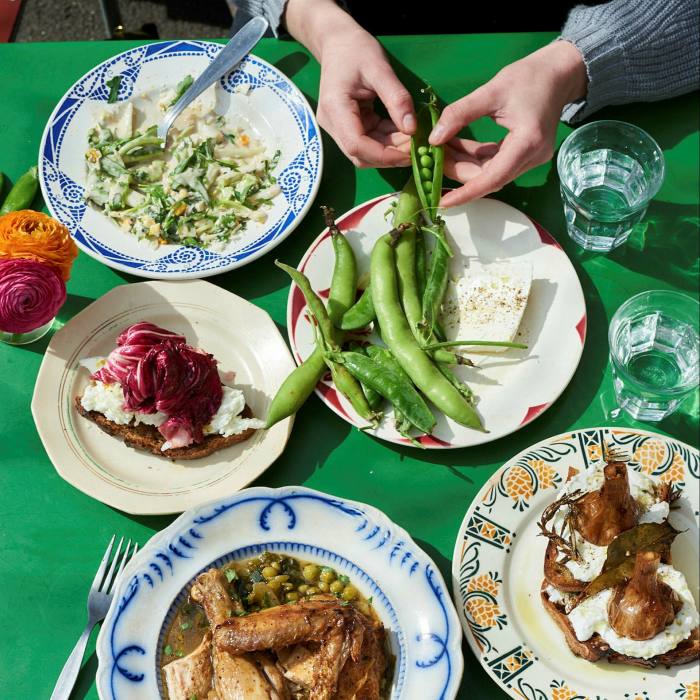
From Dalston Curve Garden, head down to the Regent’s Canal for unfussy, seasonal fare at the Towpath café © Joe Woodhouse
Spend the day making the most of the new Elizabeth Line’s connection that links Paddington to east London in less than 15 minutes. Get off at Liverpool Street and take a short Overground train ride up to Stoke Newington; from the station, it’s just 200m to Abney Park, one of the “Magnificent Seven” garden cemeteries of London and also a nature reserve, buzzing with woodland life.
From here, it’s a short hop on the bus to Dalston Curve Garden, a free-to-enter community garden built on the old Eastern Curve railway line. For lunch, head to the Towpath café (near Whitmore Bridge on the Regent’s Canal) for unfussy, seasonal dishes such as confit wet garlic, goat’s curd and toast or beetroot, rainbow chard, braised lentils, anchovy and soft boiled egg.
In the afternoon, watch a matinee performance at Dalston’s solar-powered Arcola Theatre, which has a reputation as one of the great success stories in British theatre. It champions diversity and is aiming to become the world’s first carbon-neutral theatre.
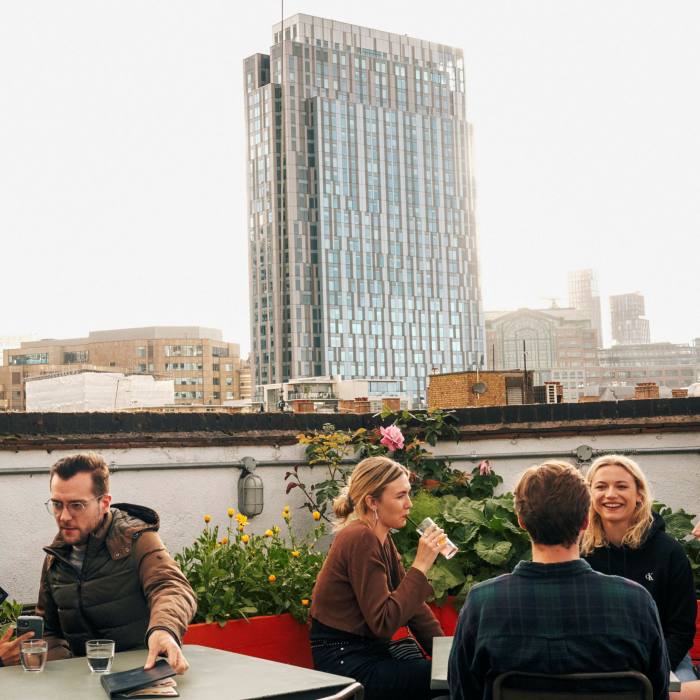
The Culpeper’s rooftop garden, where the Whitechapel pub/restaurant grows as much of its produce as possible © Marco Kesseler
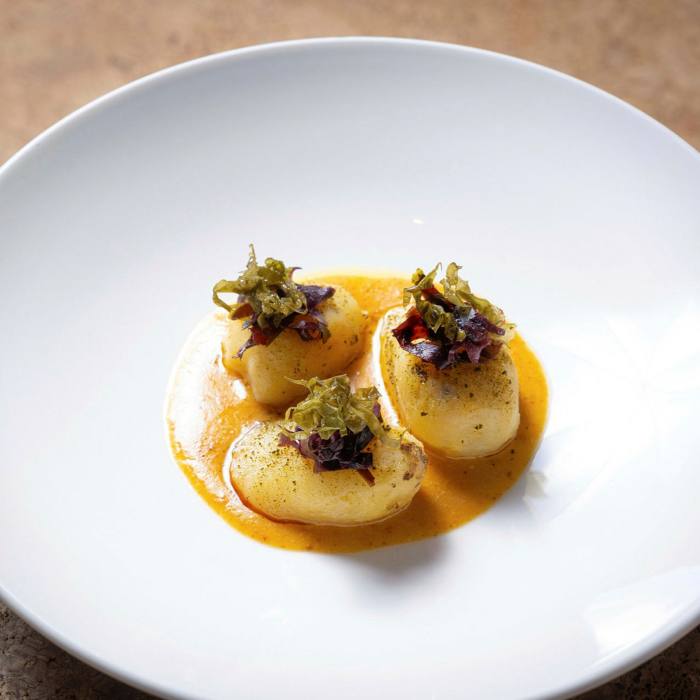
Charlotte potatoes with seaweed and caramelised cream at Silo, a zero-waste restaurant in east London
For pre-dinner drinks with a view, make for the splendid third-floor rooftop garden at The Culpeper (near Aldgate East Tube station), whose wines are from small artisan growers who work sustainably, organically and biodynamically, and where the garnish in your cocktail or mocktail is likely to be plucked from the very garden you are sitting in. You can eat here too; otherwise, walk over to Liverpool Street, from where it’s just one stop to Stratford. Here you can walk through the Olympic Park (I recommend a detour via the wildlife-rich wetlands along the River Lea) to the acclaimed fine-dining zero-waste restaurant Silo.
Either walk back through Olympic Park to Stratford (or take the overground from Hackney Wick) to take the Tube back to Inhabit Queen’s Gardens, stopping off for a nightcap in Victorian grandeur at The Cleveland Arms on Chilworth Street, a cosy, oak-panelled pub in a beautifully restored listed building around the corner from the hotel.
Sunday
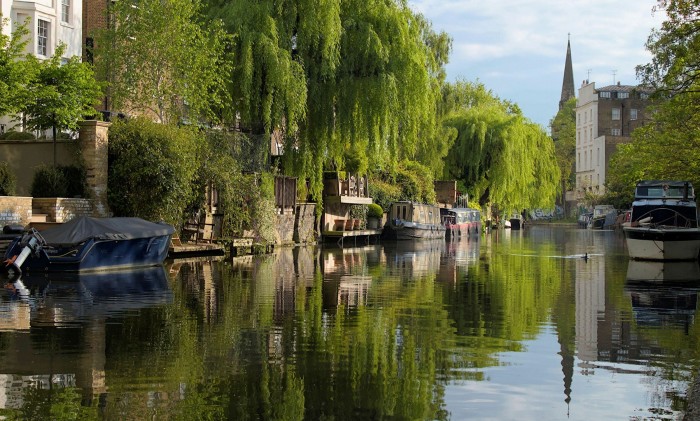 Start your Sunday with a stroll or cycle ride along Regent’s Canal © Lecart Photos/Alamy
Start your Sunday with a stroll or cycle ride along Regent’s Canal © Lecart Photos/Alamy
The next day is all about the canals. They’re my favourite way to explore London on foot or by bike because they’re traffic-free and, as they were originally used as transport arteries, they permeate some of the most historic parts of the city. You can join one of the most scenic canal towpaths at Little Venice (where Grand Union Canal joins Regents Canal) and walk or cycle just over two miles along Regent’s Canal, skirting Regent’s Park and London Zoo to Camden Lock. The route is part of Section Two of the Jubilee Greenway walking route that links all the major sites of the 2012 Olympic Games (keep an eye out for the Jubilee Greenway discs in the pavement dotted along the route).
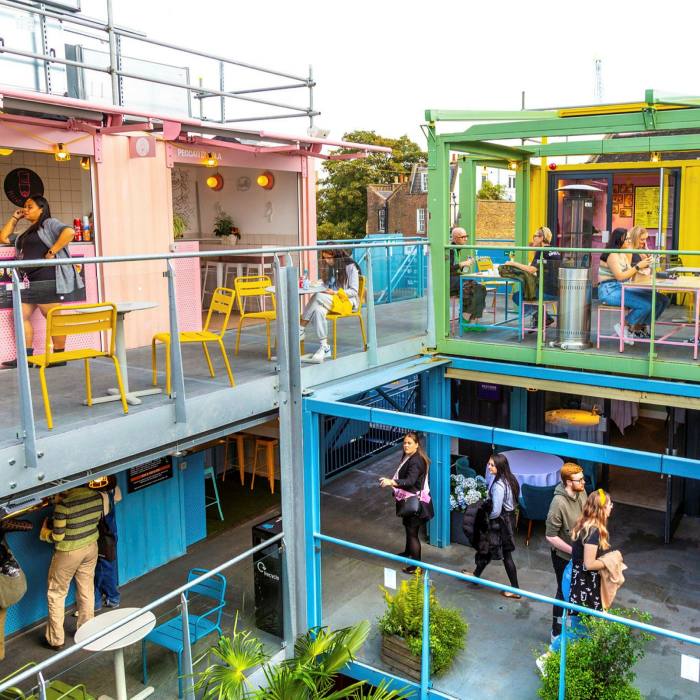
Camden’s Buck Street Market is aimed at the ‘conscious consumer’

The market’s sustainable food offerings include smoked flatbread with baba ganoush, falafel, chickpeas and sesame at Bad Vegan © Nathaniel Noir/Alamy (2)
At Camden Lock there are any number of places to have a coffee or lunch at Buck Street Market, where sustainable food brands (all of which have vegan or vegetarian options) aimed at the conscious consumer are housed in vibrantly coloured recycled shipping containers. Plus there’s a variety of ethical fashion and retail traders. If you want to continue further along the canal before lunch, carry on along Section Three of the Jubilee Greenway to Angel, home of The Duke of Cambridge, Britain’s first organic pub, which was certified by the Soil Association in 1998. It’s a quiet oasis away from the busy high street, serving seasonal dishes and a range of cask ales.
Finally, heading back along the canal, stop off in the late afternoon at Primrose Hill, climb to the top for that glorious view of the capital and watch the sun go down on your green weekend.
Richard Hammond is a journalist and author of The Green Traveller, a guide to sustainable travel, responsible planning and conscious adventure
Got any tips for a green weekend in London? Share them in the comments
Follow FT Globetrotter on Instagram at @FTGlobetrotter
Cities with the FT
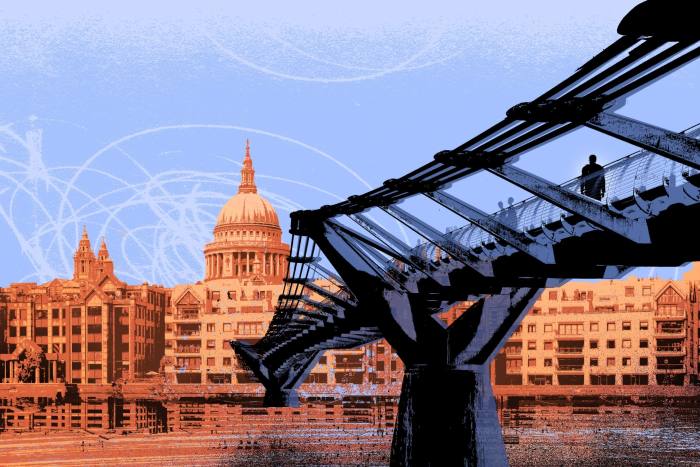
FT Globetrotter, our insider guides to some of the world’s greatest cities, offers expert advice on eating and drinking, exercise, art and culture — and much more
Find us in London, Tokyo, New York, Paris, Rome, Frankfurt, Singapore, Hong Kong and Miami
https://www.ft.com/content/9b781276-2f67-4744-b200-08828ace5f30





